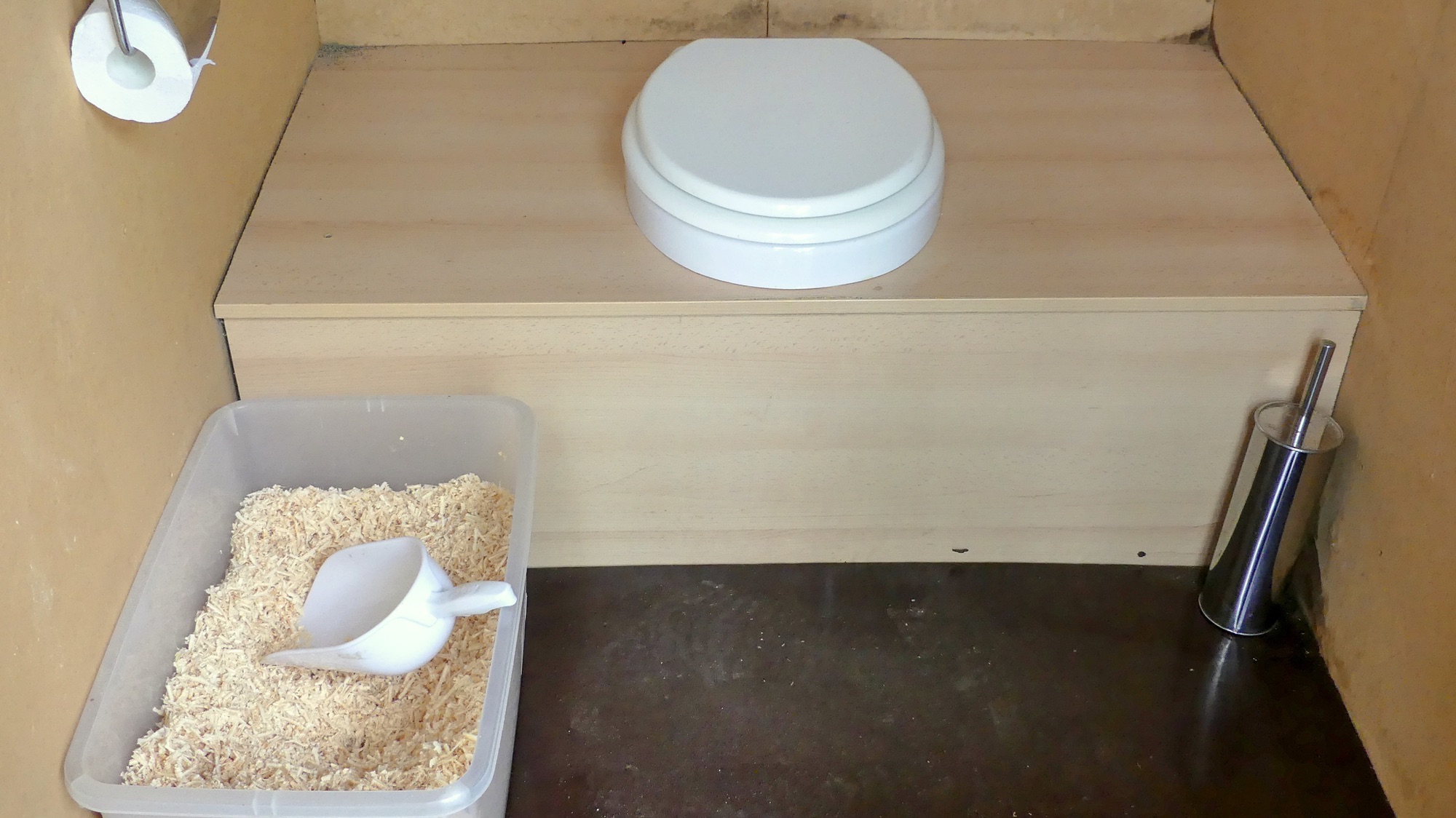

Composting toilets are gaining popularity for a good reason—they are environmentally friendly, cost-effective, and perfect for remote or mobile locations. These toilets offer a sustainable solution for managing human waste by converting it into compost with little to no water. They provide an alternative to traditional plumbing, reducing water usage and curbing water pollution.
Composting toilets are also often more budget-friendly to install and maintain, especially in areas without access to traditional plumbing, like rural settings, national parks, and off-grid locations. Their practical design makes them an excellent fit for camper vans and RVs.
What is a Composting Toilet?
A composting toilet is a type of dry toilet that uses composting and dehydration processes to break down human waste. It operates without water or chemicals, distinguishing it from traditional plumbing fixtures. The primary function of these toilets is to separate urine and feces into separate containers, enabling more efficient and odorless decomposition.
Key Components of a Composting Toilet
A composting toilet typically consists of several key components that facilitate the decomposition of human waste into usable compost, thereby minimizing water usage and environmental impact. The main parts include:
- Urine Separator: This component separates urine from feces, helping reduce odor and accelerate composting as excess moisture can inhibit aerobic decomposition.
- Solids Container: This container collects feces. It is often lined with a compostable bag and filled with carbon-rich materials like sawdust, peat moss, or coconut coir, which aid in drying the waste and controlling odors.
- Ventilation System: Usually equipped with a fan or vent, this system removes moist air, controls odors, and maintains an oxygen-rich environment essential for the composting process.
- Access Door or Hatch: Located at the base of the unit, this allows for the removal of finished compost.
- Composting Chamber: Some systems include a separate chamber where the actual composting occurs, allowing the decomposition process to continue separate from the collection of fresh waste.
- Cover Material Storage: This space or compartment stores cover materials, such as sawdust or peat moss, which are added to the solids container after each use to aid in composting and odor management.

How Composting Toilets Work
Using a composting toilet involves straightforward steps that transform human waste into useful compost through a natural, biological process. Here is a step-by-step breakdown of how composting toilets operate:
- Use of the Toilet: Solid waste and liquid are deposited into the toilet. The urine separator then diverts urine away from the solid waste, directing it into a separate container or an external leach field. This separation significantly reduces the moisture content of the solid waste, benefiting the composting process.
- Addition of Carbon-Rich Materials: After each use, carbon-rich materials such as sawdust, coconut coir, or peat moss are added to the solid waste in the composting chamber. These materials absorb moisture, balance the carbon-to-nitrogen ratio, and suppress odors, facilitating aerobic decomposition.
- Composting Process: Solid waste begins to decompose inside the composting chamber, aided by aerobic bacteria and microorganisms that break down the waste into compost. A ventilation system, typically including a fan or vent stack, supports this process by expelling excess moisture and odors from the chamber, ensuring an oxygen-rich environment necessary for efficient composting.
- Maturation of Compost: Depending on the system and usage, the decomposing material in the toilet transforms into dry, odorless compost over several weeks to months. During this period, the material may need to be mixed or turned occasionally to ensure even decomposition and aeration.
- Removal of Compost: Once the composting process is complete, the mature compost can be removed from the chamber through an access door or hatch, usually located at the bottom or side of the unit.
Benefits of Using a Composting Toilet
Composting toilets effectively reduce water usage as they do not require flushing. This saves significant amounts of water and reduces the burden on sewage treatment facilities. Additionally, these toilets convert waste into compost that can be used to enrich soil without any harmful chemical residues. They are particularly useful in remote areas where traditional plumbing is not feasible or too expensive to install. Moreover, they are convenient, require less maintenance, and provide simple waste disposal methods.
Best Practices for Maintaining a Composting Toilet
Consistent maintenance is crucial to ensure the optimal functioning of a composting toilet. This includes regularly adding carbon-rich materials to balance nitrogen levels and facilitate aerobic decomposition. Additionally, monitoring the temperature and moisture levels within the unit is important to maintain proper composting conditions. Depending on the unit’s capacity and frequency of use, the composting chamber should also be emptied periodically to prevent overflow and maintain hygiene.
FAQs
How often does a composting toilet need to be emptied?
This varies based on the number of users and the model but typically ranges from once a year to once every few years.
Can a composting toilet be installed in an existing bathroom?
Yes, many composting toilets are designed for easy installation in existing structures.
What do I do with the compost?
The compost can be used in gardens to improve soil health, though it should be fully cured before use.
Do composting toilets require electricity?
Some models use fans or heaters that require electricity, but non-electric versions are also available.
Do composting toilets smell?
When maintained correctly, composting toilets do not emit a foul odor.
Are composting toilets only for rural areas?
While they are popular in off-grid and rural settings, composting toilets are also used in urban homes, especially those aiming for a sustainable lifestyle.
Is the compost safe to use in gardens?
The compost produced is generally safe for non-edible plants. Some high-end models can make compost safe for vegetable gardens after further curing.
Composting toilets are an eco-friendly solution for managing human waste and a practical choice for sustainable living and travel. By effectively understanding and utilizing these systems, individuals can significantly reduce their environmental footprint, conserve water, and enjoy greater freedom and convenience during outdoor adventures.